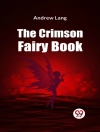In ‘The Steppe: The Story of a Journey, ‘ Anton Chekhov presents a profound exploration of human experience as it unfolds across the vastness of the Russian landscape. The novella employs a rich, evocative literary style marked by its detailed descriptions of nature and deep psychological insight. It functions as a blend of travel narrative and philosophical reflection, inviting readers to contemplate the interrelationship between humanity and the environment. Chekhov’s keen observations and naturalistic approach illuminate themes of solitude, beauty, and the transient nature of life, set against the backdrop of the expansive steppe. Chekhov, revered as one of the foremost writers of the late 19th century, crafted this novella during a period when he was deeply engaged with the societal changes confronting Russia. His own experiences as a doctor and a traveler informed his understanding of different strata of society, as well as the importance of empathy and introspection. These elements are intricately woven into the narrative, showcasing not only his literary prowess but also his profound awareness of the human condition. This exquisite work is highly recommended for readers seeking a nuanced portrayal of nature and self-reflection. Chekhov’s lyrical prose and philosophical depth provide an enriching experience, making ‘The Steppe’ an essential read for both lovers of classic literature and those interested in the complexities of human existence.
Mengenai Pengarang
Anton Pavlovich Chekhov (1860–1904) was a Russian playwright and master of the modern short story. His literary production constitutes one of the cornerstones of Russian literature. Chekhov qualified as a physician at the I.M. Sechenov First Moscow State Medical University, a background that influenced his renowned medical-themed literature. Being a practicing doctor, Chekhov famously stated, ‘Medicine is my lawful wife, and literature is my mistress.’ Despite his brief career – he died at the age of 44 – his works left an indelible mark on both the Russian and global literary landscapes. Chekhov’s narratives often delve into the lives of complicated characters, eschewing melodrama in favor of finessed character development and human conflicts. His prose style is characterized by concision, avoidance of superfluous elements, and a subtle deployment of irony. ‘The Steppe: The Story of a Journey’ is one of Chekhov’s celebrated works, a novella which earned him the coveted Pushkin Prize in 1888. This text beautifully exemplifies Chekhov’s capacity to depict the Russian landscape and psyche with profound emotional depth, marking a pivotal step in his evolution as a writer. His other significant works include ‘The Cherry Orchard, ‘ ‘The Three Sisters, ‘ ‘Uncle Vanya, ‘ and ‘The Seagull, ‘ plays that continue to be globally produced and studied for their artistic innovation and exploration of human nature.












